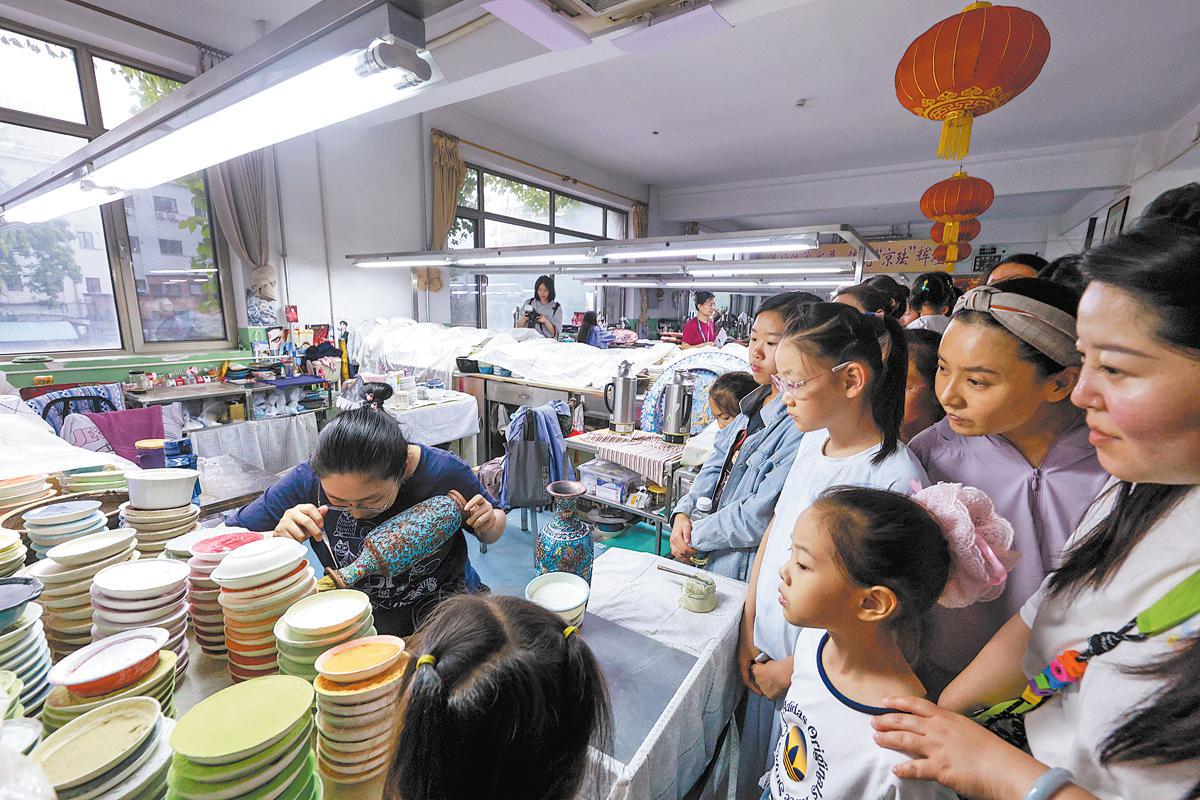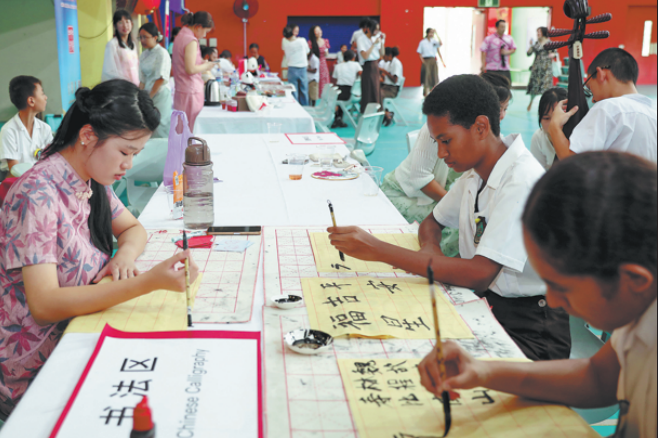Cloisonne shines again as old crafts regain luster


Revival of tradition
His philosophy resonates with a broader shift, as across China, inheritors of intangible cultural heritage are blending tradition with modernity. One notable example is cloisonne artisan Xiong Songtao in Beijing, whose glistening enamel pieces earned his workshop a global partnership with the Spanish fashion brand Loewe.
Similar partnerships have emerged in other crafts. The Italian brand Fendi collaborated with artisans from China's Yi ethnic group to create a baguette bag featuring traditional Yi embroidery and silverwork. French luxury brand Dior incorporated "Ronghua", a velvet flower-making craft that has been practiced since the Tang Dynasty (618-907), into its men's couture knitwear.
Among the driving forces of the revival of traditional crafts are young Chinese consumers. Gen Z, in particular, has developed a proud appetite for native designs and motifs, fueling the "Guochao" or "China-chic" wave that values authenticity and heritage.
The surging sales of cultural heritage-themed products reflect this trend. According to data from China's leading e-commerce platforms, Taobao and Tmall, the annual transaction volume of ICH-related products surpassed the 100 billion yuan mark in 2023, reaching 107.32 billion yuan ($15 billion), a year-on-year increase of 37.7 percent.
Policy-driven preservation
Behind cloisonne's comeback is not only the passion of masters like Zhong, but a concerted push by the Chinese government to preserve and revitalize traditional crafts.
Cloisonne, widely produced during the Ming (1368-1644) and Qing (1644-1911) dynasties, was listed as a national intangible heritage in 2006.
In 2017, the central government issued a set of guidelines on advancing the inheritance and development of fine traditional Chinese culture, emphasizing efforts to preserve cultural heritage, nourish artistic creation, integrate traditional culture into daily life and industry, and promote mutual learning between Chinese and foreign civilizations.
The impact of such policies is tangible. Across the country, over 11,000 ICH workshops have been established, preserving traditional crafts while also creating jobs in local communities. As of March this year, the number of national-level ICH inheritors had grown to nearly 4,000.
Zhong noted that each year, various government agencies channel resources into keeping cloisonne alive. "The Beijing government supports us in R&D projects, including developing new enamel glazes," Zhong explained, adding that the Beijing Municipal Science and Technology Commission has sponsored the company's research into lead-free enamel, a greener alternative to traditional leaded glass glaze.
Education plays an equally vital role. Beijing Enamel Factory has introduced cloisonne-making courses in several primary and middle schools as an extracurricular program to spark interest among youth. "Of course, not everyone will become a cloisonne artisan," Zhong said with a smile. "But whatever they do in life, they can help pass on the flame."
Xinhua
























